From various web sites and books:
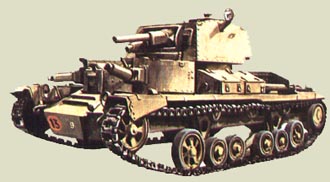 |
Cruiser Mk I |
| Designed in 1936, the Cruiser Mk I by Vickers Armstrong was a considerable advance over other British tanks of the era such as the Vickers Medium. It had a hydraulic powered traversing mechanism for the main turret and a very good three-wheel bogie suspension. There were, however, carry-overs from earlier models, like the two MG turrets in the front hull, which led to increase the crew number to 6.In spite of the good start, by 1940 the Mk I was inadequate for the protection, firepower, speed and cross country standards required by the war. All the Mk Isent to France (1940) and to Greece (1941) were lost. In North Africa Cruiser Mk I had to soldier on well into 1942. |
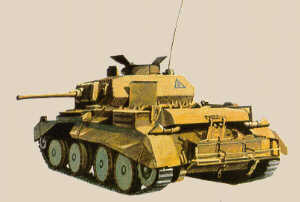 |
Cruiser Mk IV |
| The Cruiser Mk IV was the most important British tank (numerically) of the early war years. It adopted, as well as that of its predecessor Cruiser Mk III, theChristie suspension which improved the poor off-road performance of the early Cruiser marks. Both Mk III and Mk IV were not a success as their armour was too light and the 2-pounder main gun inadequate. Production ceased in 1941 after 65 Mk III and 655 Mk IV had been delivered. |
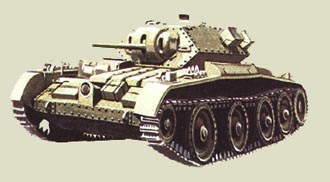 |
Cruiser Mk V Covenanter Weight : 18.2 ton |
| The Cruiser Mk V was basically an A13 reworked to remove the mechanical problems which had affected the performance of the Cruiser Marks III and IVs.The new design featured a very good steering system and a “flat-12” engine for reducing the tank’s height. The new engine, however, created additional cooling problems which required four different marks before they were solved. |
Total production was 1,771 but the Covenanters were never committed to battle and served as training vehicles. They were withdrawn during 1943..
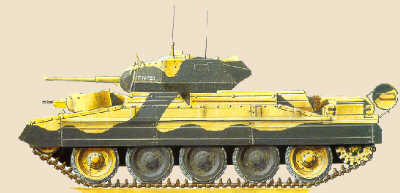 |
Cruiser Tank Mk VI “Crusader II” |
| The Crusader II formed the main equipment of the British armoured divisions in the Desert Campaigns. It was a fairly reliable vehicle, specially if one considers the disappointing performances of its predecessors (the Cruiser Mk III and IV, the Covenanter, and the Crusader I). Total production amounted to 5,300 units. Crusaders were used also for a variety of special purposes including observation post, command tank, ARVs, mine-clearing, anti-tank gun tractors, and more… |
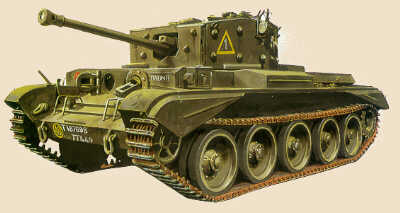 |
Cruiser Tank “Cromwell” |
| The Cromwell was the first British tank to have a reliable engine (the Rolls Royce Meteor). Production started at Leyland Motors arsenal from mid-1943 onwards. The Cromwell, with its well-tried suspension, powerful engine, and good protection gave the British tank crews the opportunity to be at par with their German opponents. It saw action from May 1944 onwards and became the most important, in both numerical and quality terms, of the British tanks. |